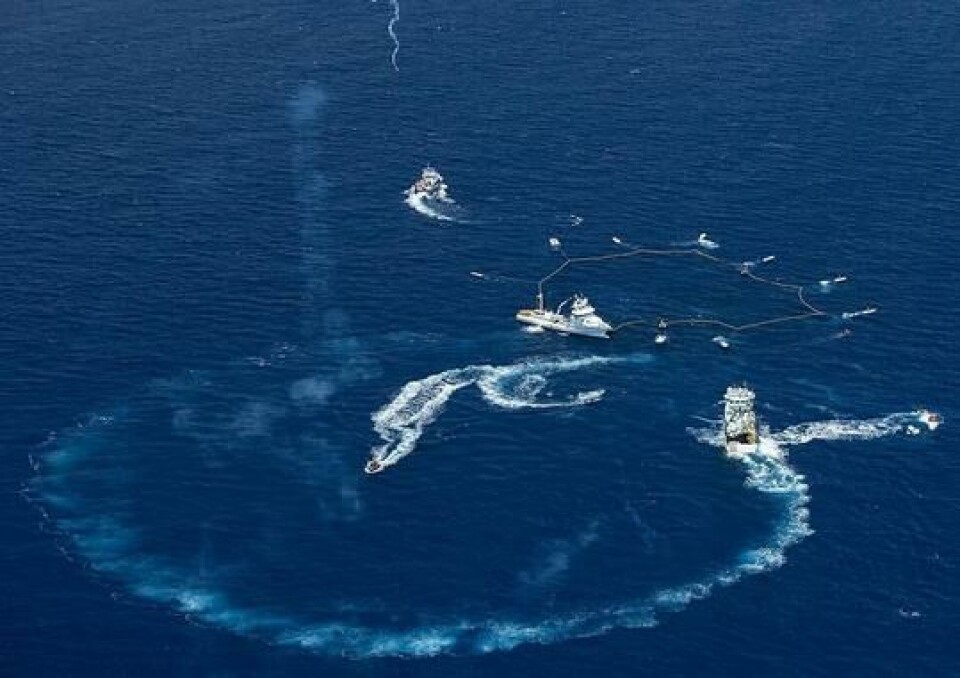
World’s most expensive fish?
When the president of the Kiyomura sushi restaurant chain was successful in purchasing the large fish for a record 155.4 million yen (approximately € 1.36 million), he said that “the price was a bit high”, but Kiyoshi Kimura was planning to serve the fish to his customers last week. The price works out to be about € 6,100 per kilo. An article by Malcolm Foster of The Associated Press said that restaurant operators like Mr. Kimura could charge up to 2,000 yen (~€ 17.50) for a single slice of raw sushi cut from the giant fish’s fatty belly section. Mr. Kimura had also set the previous record for the payment of a bluefin tuna when he paid some 56.4 million yen (~€ 492,000) for one fish during last year’s New Year’s auction.
A number of initiatives aimed at producing bluefin tuna in captivity have been undertaken around the world, but little success have been had with the attempted spawning of mature fish followed by hatching and start feeding. The Australian company Clean Seas states on its web site that “We have achieved a world first in closing the life cycle of the Southern Bluefin Tuna and will soon be growing these amazing fish from hatchery reared stock...”. In 2009, Clean Seas was awarded the second place in World's Best Invention of 2009 by Time magazine after it managed to breed Southern Bluefin Tuna in captivity- with assistance from the Kinki University in Japan. But for now, Clean Seas is only selling farmed tuna that has been caught from wild stocks and reared in net pens for 6-9 months until they reach the 25-40 Kg harvest size. Other companies have been doing the same with one or more of the other two bluefin tuna species- the Atlantic and Pacific varieties.
But this practice has been under much criticism by both scientists and environmental groups, as world stocks of bluefin tuna have been subject to excessive fishing pressure due to the popularity of the fish as raw material for sushi and other popular dishes. The International Commission for the Conservation of Atlantic Tunas (ICCAT) affirmed in October 2009 that Atlantic bluefin tuna stocks have declined dramatically over the last 40 years, by 72% in the Eastern Atlantic, and by 82% in the Western Atlantic. The Southern Bluefin tuna is also in rough shape, and listed as “critically endangered” by some estimates; “Estimated spawning stock biomass has declined approximately 85% over the past 36 years (1973–2009) and there is no sign that the spawning stock is rebuilding” (International Union for Conservation of Nature).
The concern over the decline of wild tuna stocks led to the announcement by Japan’s Fisheries Minister Akira Gunji last Friday that the government will ban the expansion of bluefin tuna farms (that use wild juvenile tuna) across the country as part of efforts to prevent overfishing. Meanwhile, Umami Sustainable Seafood of San Diego claims to have had some success reproducing bluefin tuna held in large net pens on the Adriatic coast in Croatia, where the fish apparently spawned while in captivity. Said the former Chairman and CEO of Umami, Oli Valur Steindorsson in a press release issued in August, 2011; “This event marks a major milestone in our company’s ultimate goal of building a commercially viable closed life cycle bluefin tuna farming operation. For three consecutive years at our Croatian facility, we have spawned bluefin tuna in captivity in a natural way. Although we still have a lot of work left to do in achieving our ultimate goal of developing economically viable processes of raising fish from the fry, these results prove that our experience, and our understanding of the species, is paying off. I am now more confident than ever that we will be able to dramatically increase the world’s access to this highly valued food source, without any degradation in quality, while, at the same time, decreasing the pressure on the world’s wild populations”. Umami operates a conventional tuna-fattening farm in Mexico, and the company also has ambitions of helping to rebuild stocks of Northern Bluefin tuna.




















































